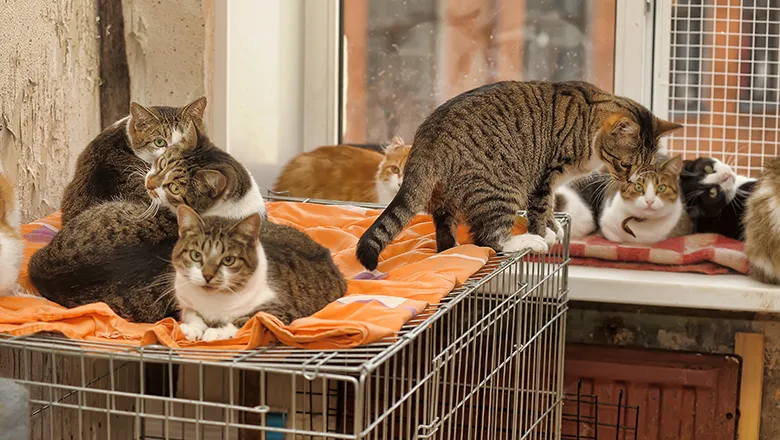Household pets, zoo and shelter animals exist in close proximity to humans and without adequate surveillance, remain a potentially high-risk disease reservoir for zoonoses. Whilst people’s minds typically turn to wildlife in wet markets or equatorial rainforests as the source of zoonotic transmission, domesticated animals in high-income countries, such as livestock or even household pets, pose as much of a threat to human popultions."
Dr Gemma Bowsher,
09 August 2021
Zoonotic diseases including from domesticated animals pose greatest health security risk, say experts
A new report calls for greater surveillance of diseases in animal populations as part of a fully integrated health security intelligence system

Animal diseases which transmit to humans are the biggest threat to public health globally, according to researchers from the Conflict and Health Research Group in the Department of War Studies, King’s College London.
Repeated epidemics and pandemics from Ebola to Covid-19 have demonstrated the major risk zoonotic diseases or zoonoses, which jump from animal to human populations, pose to humans globally.
Writing in the Journal of the Royal Society of Medicine, the authors argue that surveillance of diseases in animal populations must be taken far more seriously, and fully integrated into health security intelligence systems, in order to avoid future pandemics like Covid-19.
Currently there are few warning systems which monitor zoonotic diseases beyond livestock management. Lead author, Dr Gemma Bowsher, said:
Shelters for domestic pets in particular harbour high-risk populations, given the high levels of stress amongst the animals and their susceptibility to infectious pathogens. In 2017, over 300 cats were infected with H7N2 bird flu in a number of shelters in New York, transmitting the disease to humans. Previously identified in the city’s poultry markets, the virus had not been known to cross over into cats prior to this event.
In the UK and USA there is no population health surveillance for pets, with veterinary practices only having limited access to ad hoc warning systems. Animals who die in zoos in the UK, unlike the USA, do not undergo mandatory necropsy, the animal equivalent of a human autopsy, missing a crucial opportunity to detect potential and confirmed disease present in animal populations.
The researchers say that anticipation and early detection of potential zoonotic events should be a first order objective for any developing health security agenda in both global and domestic settings. They add that investments from the private and/or governmental sectors is needed to develop adequate intelligence-gathering methods in veterinary medicine, including early warning tools, opensource platforms, multi-source and multi-species surveillance, field testing technologies and increased attention to necropsy in captive and wild animals.
Dr Bowsher said:
"Ignoring the potential for animal infections to produce and propagate human disease is a failure of health security, as demonstrated by the Covid-19 pandemic.
“Veterinary and medical communities need to move away from silo working and collaborate more closely in order to support effective health security measures, and mitigate the risk of infectious diseases from novel viruses to anti-microbial resistance, whether they emerge in animals or humans.”

